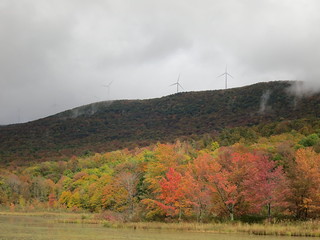 Massport took another step forward in its long-term plan to confront the impacts of climate change last week ... but there was something missing from its news release:
Massport took another step forward in its long-term plan to confront the impacts of climate change last week ... but there was something missing from its news release:As the Massachusetts Port Authority develops its long range strategic plan over the next year, a key component of that effort will be how to protect Boston Logan International Airport, the Port of Boston and waterfront real estate against long-term sea level rise, storm surges and intense weather events like superstorm Sandy.There's no link to the release, but Morgan Rousseau of Metro.us has a report that includes most of the information from the release (and also doesn't make the bridge to climate change).
The first part of the study, currently underway, is to assess both the expected number and intensity of future storms and assess the vulnerability of Massport facilities. Both elements are required to understand the issue better in order to develop appropriate resolutions.
“Good work on looking at rising sea levels is already being done and we want to work collaboratively with federal, state and local officials on this pressing issue," said Thomas P. Glynn, Massport CEO. “Resiliency planning will be critical for Massport and the region to reduce the likelihood of damage from an event and will accelerate the recovery process when an event occurs."
I asked a Massport spokesman why the agency wouldn't use the words climate change. He never wrote back. It's not like Massport's in denial here - they're quite obviously talking about climate impacts and they absolutely deserve credit for that.
But this is Massachusetts - exactly who is Massport afraid of? Gov. Deval Patrick is a strong advocate for climate action. The Massachusetts legislature passed the Global Warming Solutions Act. The entire Massachusetts Congressional delegation supports climate action. Massachusetts is one of America's leading states for clean energy jobs and is home to several groups like Ceres that organize business leadership on climate change. The Boston Harbor Association's report on sea level rise mentioned climate change in its very first sentence.
Does Massport think it would be defenseless against criticism from the few climate science deniers in Massachusetts? Or that those deniers will be thrown off the trail if they don't see the words climate change? Weird.









